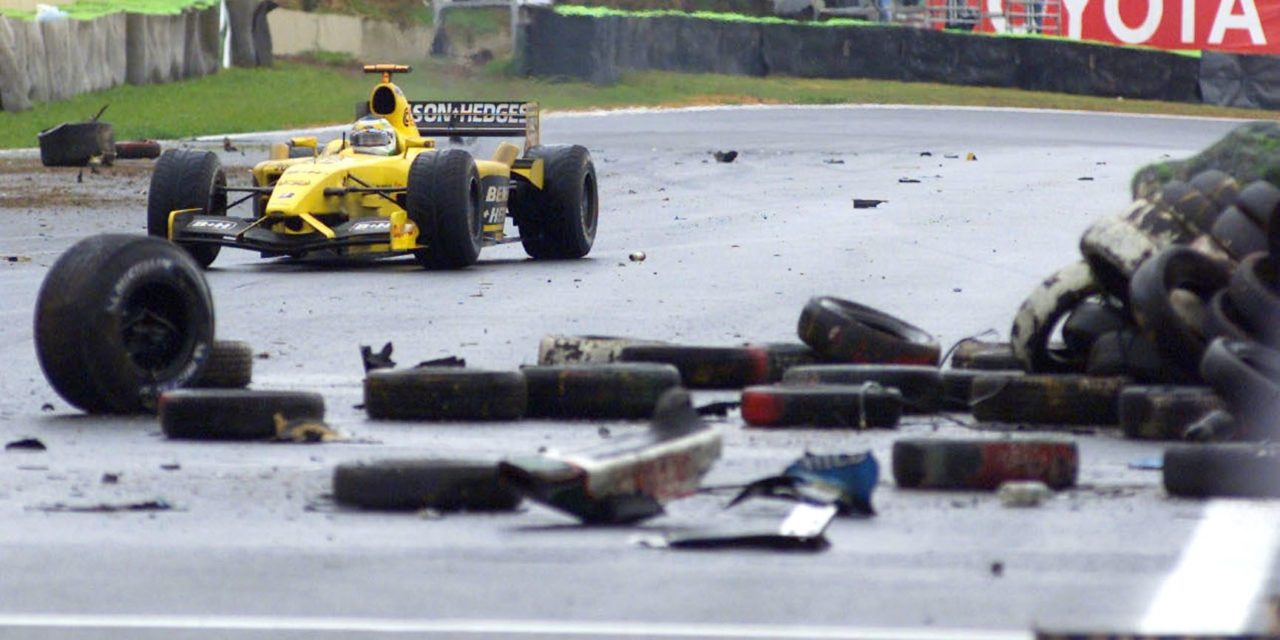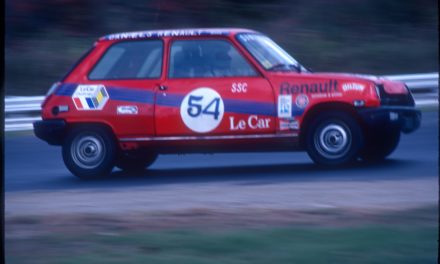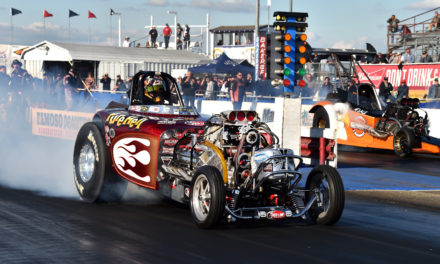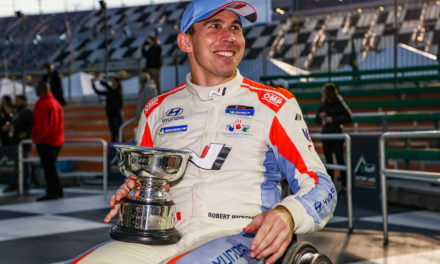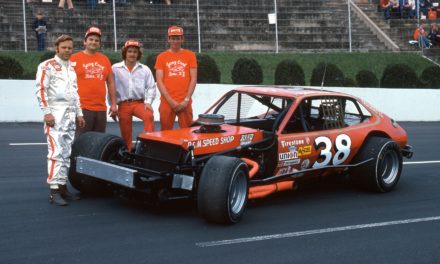In auto racing, rain is often a great equalizer. And it often rains at the Brazilian Grand Prix. Back in 2003, intense downpours on a Sunday in Sao Paulo led to five safety cars, a rain-shortened race, and an incorrectly crowned victor.
The evening after the 2003 Brazilian Grand Prix, Kimi Räikkönen was basking in the glory of his second consecutive Formula 1 win. The Finn, in just his third season, had driven a clever race in tricky conditions. While many other far-more-experienced stars crashed on the wet track, Räikkönen kept the silver and black McLaren out of trouble and up front.
Or so we thought.
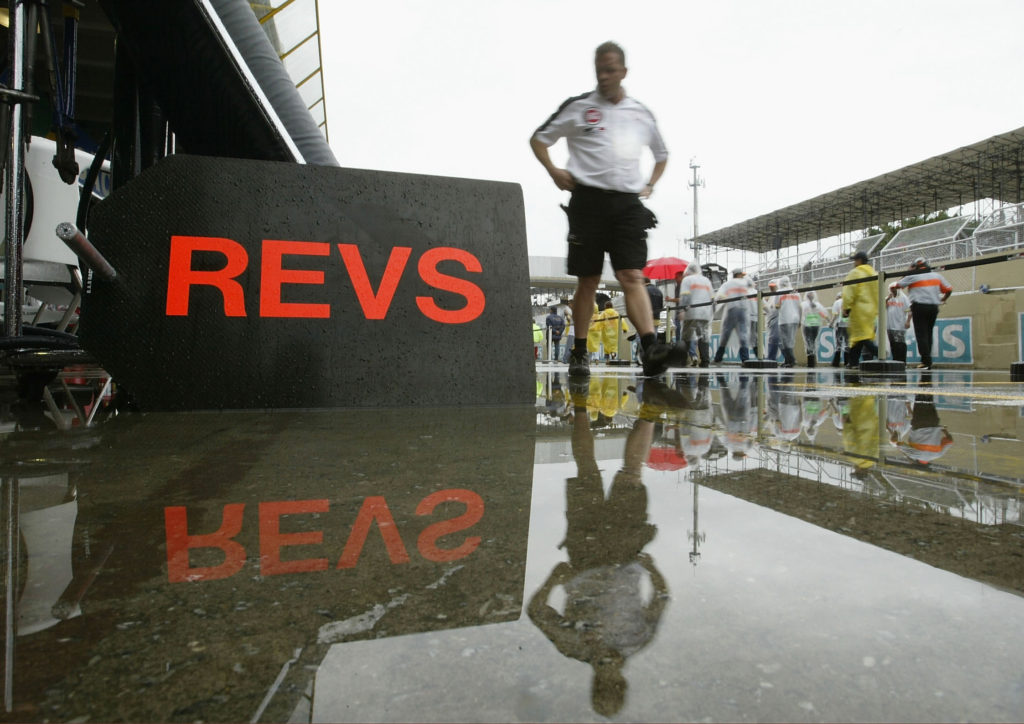
Photo by Clive Rose/Getty Images
In 2003, the Formula 1 circus visited Brazil for the third race of the season (rather than visiting in the November). Given that McLaren had won the opening two rounds, it would have been entirely predictable for it to take the third. But no one could have predicted how Brazil, the 700th grand prix of the Formula 1 world championship, would play out.
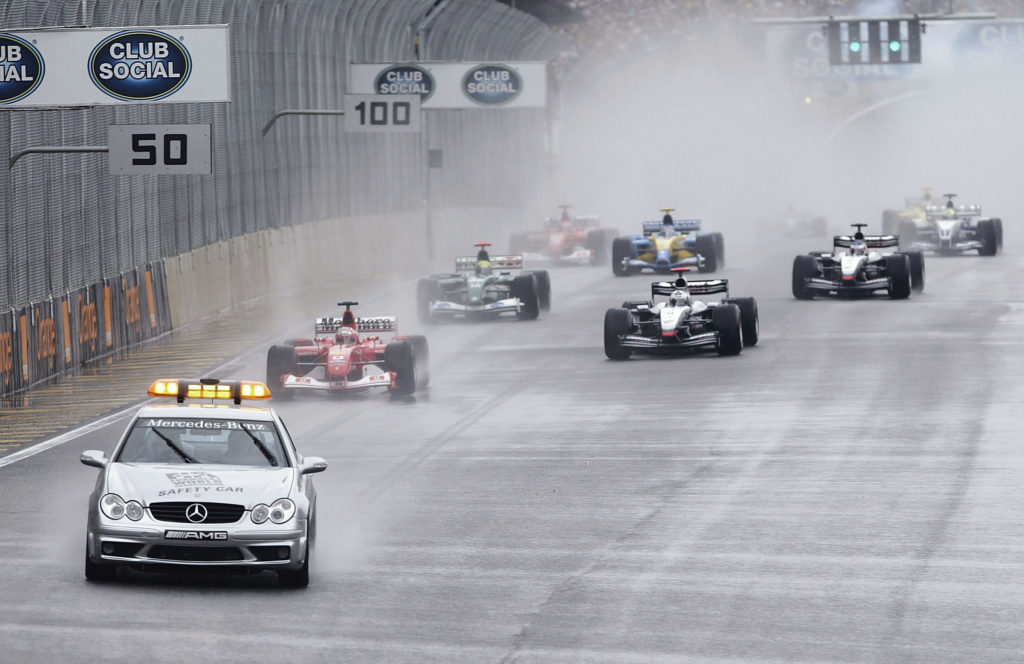
Photo by Mark Thompson/Getty Images
Initially, it looked like the race may not take place at all. Sheets of rain doused the 2.7-mile Interlagos Circuit. After a 15-minute delay the race started albeit behind a Mercedes CLK safety car. After eight laps, the coupé finally pulled off track. The race was truly on.
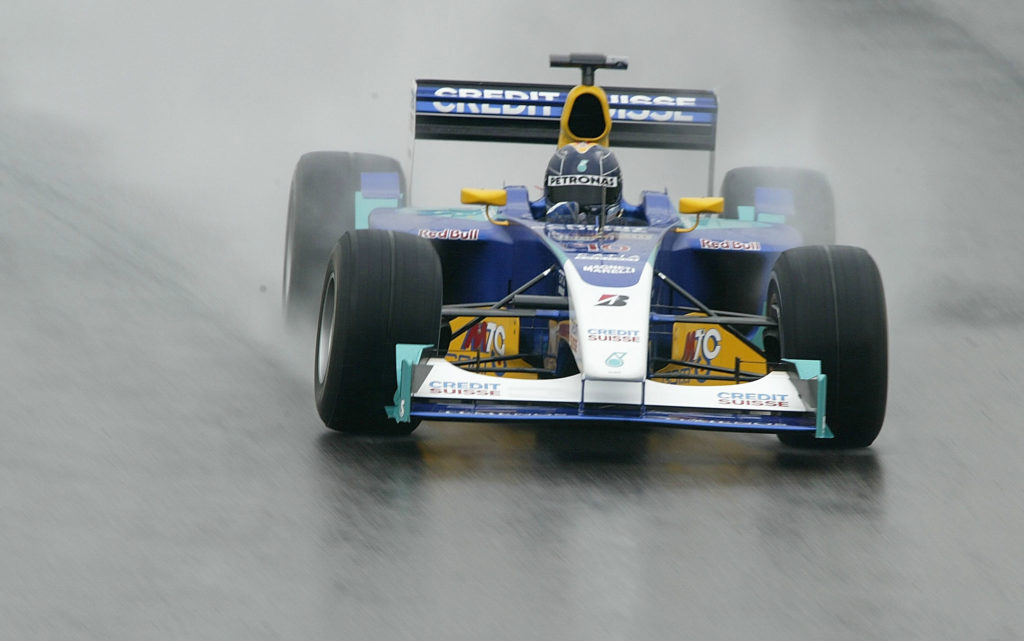
Photo by Bryn Lennon/Getty Images
It didn’t take long for the Benz to reappear. Ralph Firman’s Jordan suffered suspension failure in the most dramatic fashion. On the pit straight, traveling 175 miles-per-hour, his right-front wheel folded back against the cockpit and Firman became a helpless passenger as the bright yellow racer skated towards the left-hand corner.
His Jordan teammate, Giancarlo Fisichella, narrowly avoided the out-of-control sister EJ13. Olivier Panis and his Toyota weren’t so lucky. The wayward Jordan used the unsuspecting Japanese car as a brake. With debris all over the track, the safety car paced the field for five laps.
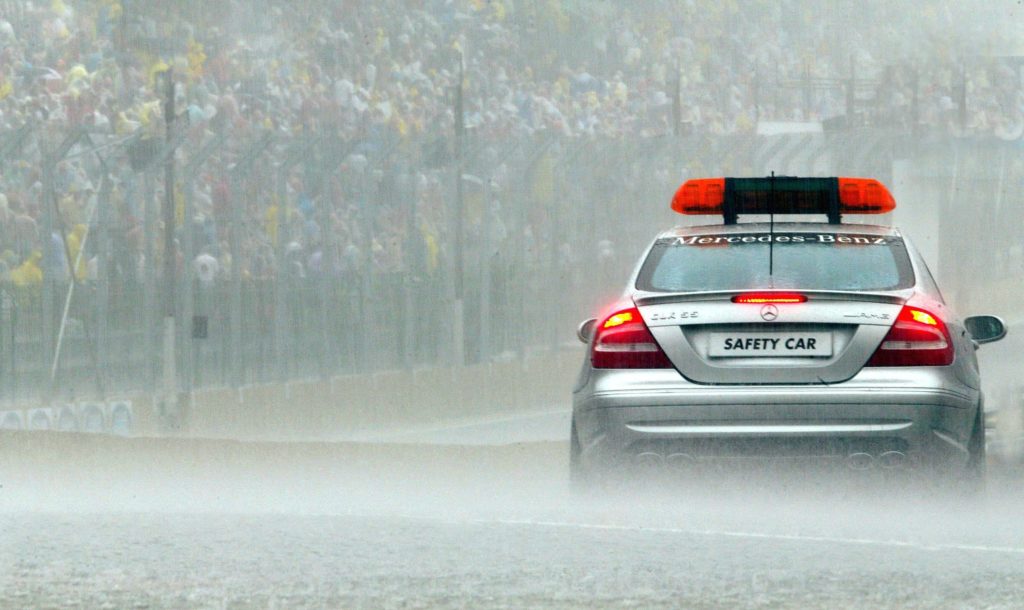
Photo by Alexander Hassenstein/Bongarts/Getty Images
Once the field was unleashed, it would take only four laps for the safety car to reprise its role as leader a third time. A surprise culprit caused the break in action. World champion Michael Schumacher—still winless in 2003—hydroplaned off the track and into the scenery.
On lap 33, three laps after racing restarted, it stopped once more when Jenson Button endured a heavy impact after hydroplaning over the water like Schumacher. At this point, it looked as though the safety car would lead more laps than anyone else in the field.
After a four-lap clean up, the grand prix resumed on lap 37. This green flag stint surprisingly lasted 17 laps.
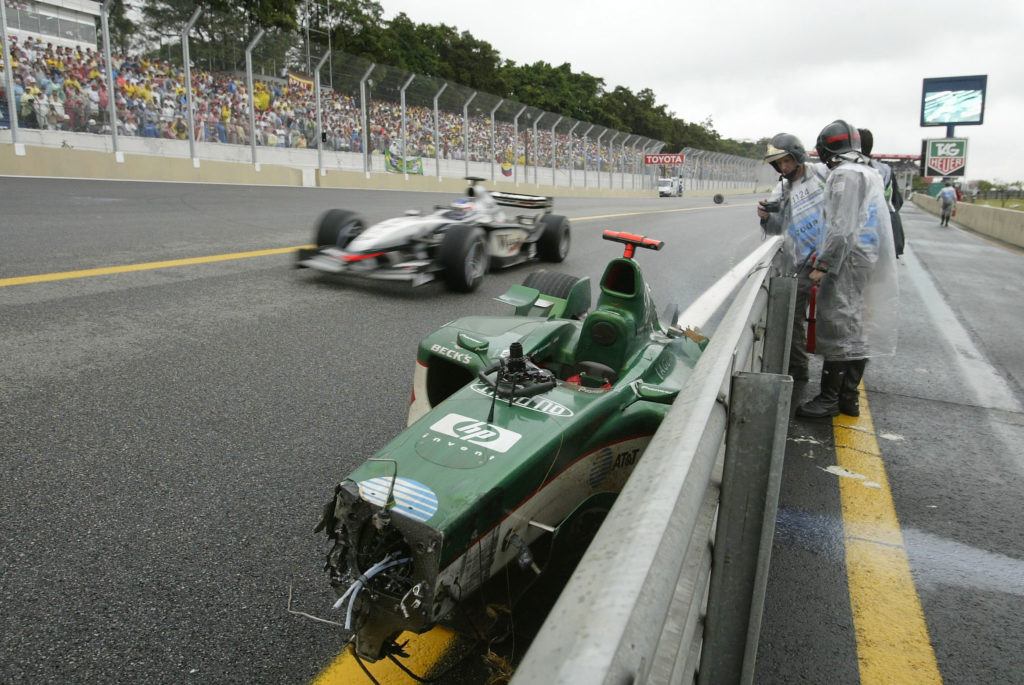
Photo by Clive Rose/Getty Images
Caution, again. Entering the start-finish straight, Mark Webber crashed his Jaguar, scattering green bits of debris across the track. Giancarlo Fisichella, in another display of luck or quick wits, managed to jink around it. Fernando Alonso, in third place, wasn’t as fortunate. Distracted by radio chat about the optimal tires for the next stop, Alonso crested the hill at speed and slammed into one of the Jaguar’s wheels.
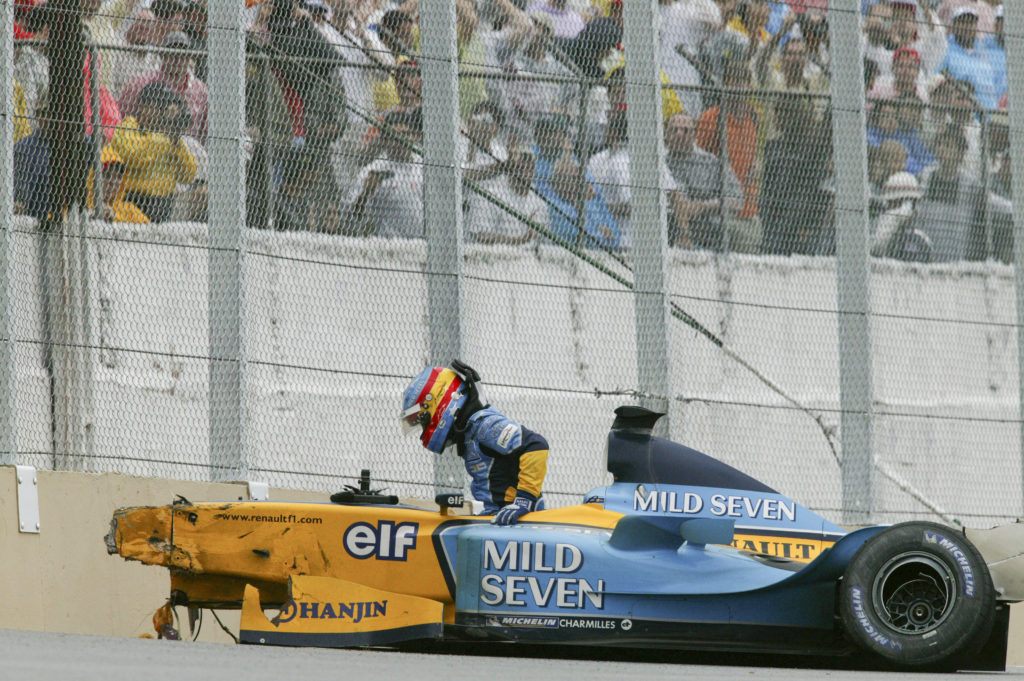
Fernando Alonso (Photo by Gianni GIANSANTI/Gamma-Rapho via Getty Images)
The impact launched the young Spanish driver into the wall. His first impact with a tire barrier measured 35G. His second with a concrete wall on the other side of the track measured 60G. Neither Alonso nor Webber suffered serious injuries.
Seconds later, Fisichella slithered past Raikkonen, and into the lead, when the Finn ran wide. It was a move that would have lasting consequences.
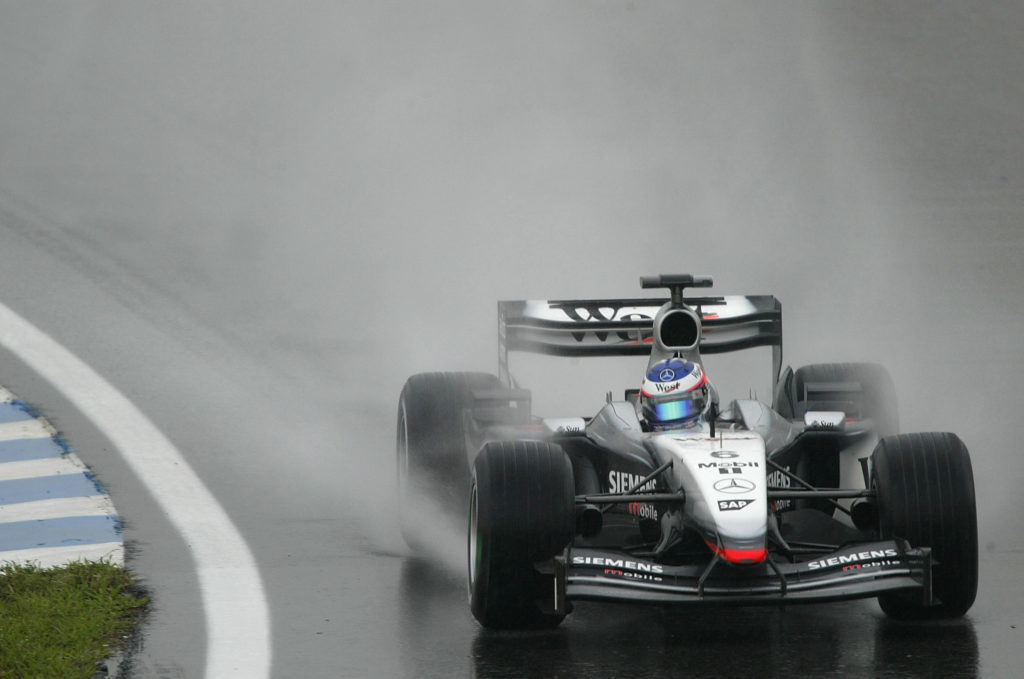
Kimi Raikkonen (Photo by Bryn Lennon/Getty Images)
Räikkönen quickly re-established himself at the front and the safety car was deployed for Webber’s wreck. Officials then decided to stop the race as it had run the required 75% of its distance.
As Fisichella rolled to a halt in the pitlane, his overheating Jordan caught fire. But heck, he thought he’d given cash-strapped Jordan a win and celebrated wildly as his EJ13 went up in flames.

Photo by Mark Thompson/Getty Images
“We did something a bit different,” said Jordan director of race engineering Gary Anderson. “We had a gut feeling and then the race fell into our hands. We weren’t competitive in our own right but we bought a lottery ticket and it came up.”
That lottery ticket was pitting Fisichella for tires on lap seven, during the initial safety car period, and providing him with enough fuel to finish the race.
Official timing showed otherwise. It displayed that Fisichella had only completed 55 laps when the red flag was thrown. The results, determined from the running order two laps prior (lap 53), showed that the Italian was second to Räikkönen.
However, Jordan’s timing showed that he was on his 56th lap. This meant that the race would be declared over on lap 54—the only circuit he actually had been in front of Raikkonen.
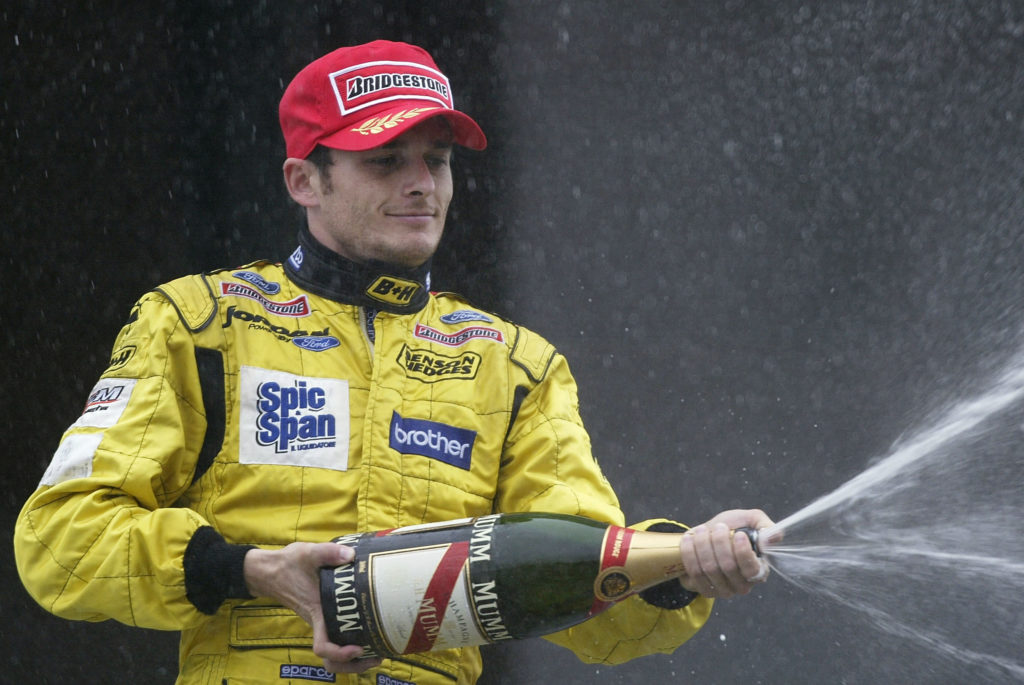
Photo by Clive Rose/Getty Images
On the podium in Sao Paulo, it was Räikkönen who sprayed the champagne and raise the winner’s trophy while Fisi looked slightly bemused. He was second for the sixth time in his career. Third place Alonso was absent, in the hospital after his monster double impact.
It took four days for F1 to finalize a decision on the finishing order.
Deliberation concluded by the following Friday. The race stewards reconvened at a meeting in Paris and declared Fisichella the winner. It was the first of the Italian’s three grand prix wins and the final of Jordan’s four. It was also the team’s 200th grand prix and the 176th—and final—victory for a Ford Cosworth engine in F1.
Fisichella eventually received his winner’s trophy at the San Marino Grand Prix, 10 days after his victory. “I still feel annoyed that I was prevented from celebrating on the podium immediately after my success,” he said.
Still, it was only fitting that the topsy-turvy and slightly surreal 2003 Brazilian Grand Prix went to an underdog winner over a week after another driver celebrated on Interlagos’ top step.
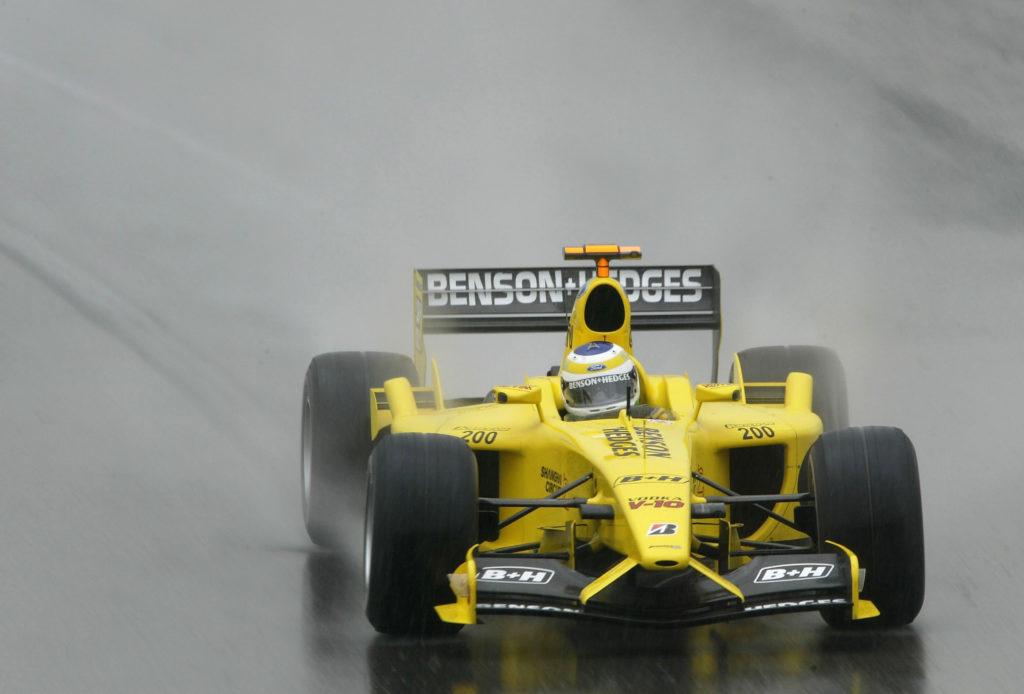
Giancarlo Fisichella (Photo by Bryn Lennon/Getty Images)

